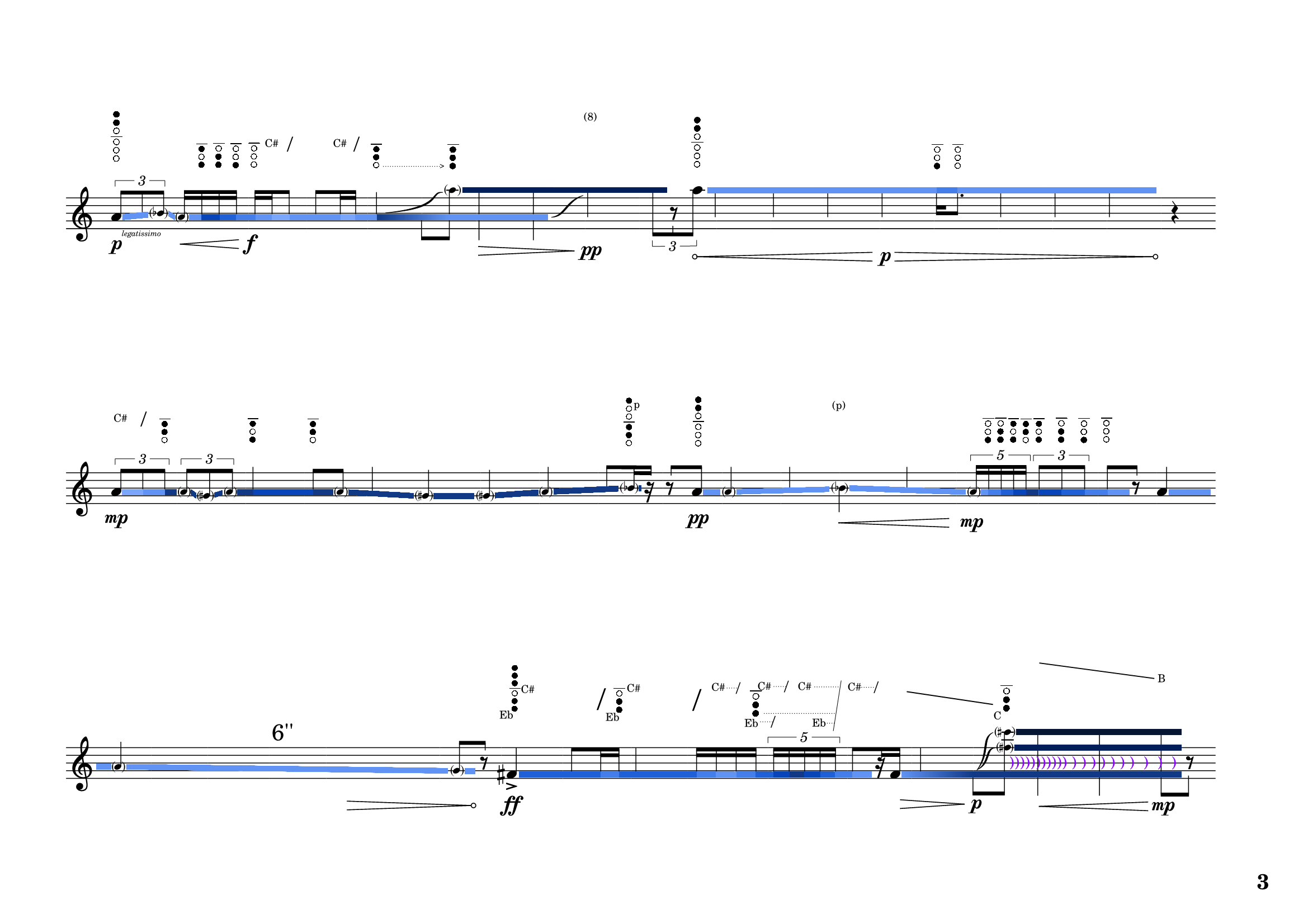for tenor saxophone (2021)

The words we use to describe the sounds we hear are misleading and insufficient, just as the terms we use to describe the colors that constitute our visual perception. Words limit what we hear/see. Words limit how we perceive that which we can actually hear/see.
When the “timbral” aspect of sound is not hastily approached through the bias of our verbal language, but through concrete knowledge of the actual physics of vision and of color, it is possible to conceive a new musical dimension that lives inside a microscopical scale of minuscule gradations.
What we call “color of sound” is, ultimately, an array of gradations of acoustic energy. Being an array, it embodies spatial relations, and hence encloses musical possibilities.
In the piece [K] for tenor saxophone, I approached this dimension through a focus on the so-called “alternate fingerings”, seen as a means to unleash the enormously rich sonic potential of this instrument. The title of the piece is in fact a pictogram of a human hand, as in the ancient glyphs from which the letter K was derived.
The precious collaboration with the saxophonist Jonathan Chazan allowed to carry a meticulous work of study and classification of different fingerings (both through spectral analysis, both through the study of the mechanics of the saxophone); through this process, it was possible to devise a notational system based on the use of color as a means to graphically represent the energetical characteristics of sounds, in a chimerical effort to achieve clarity in a realm were logic thought shows its limits.

